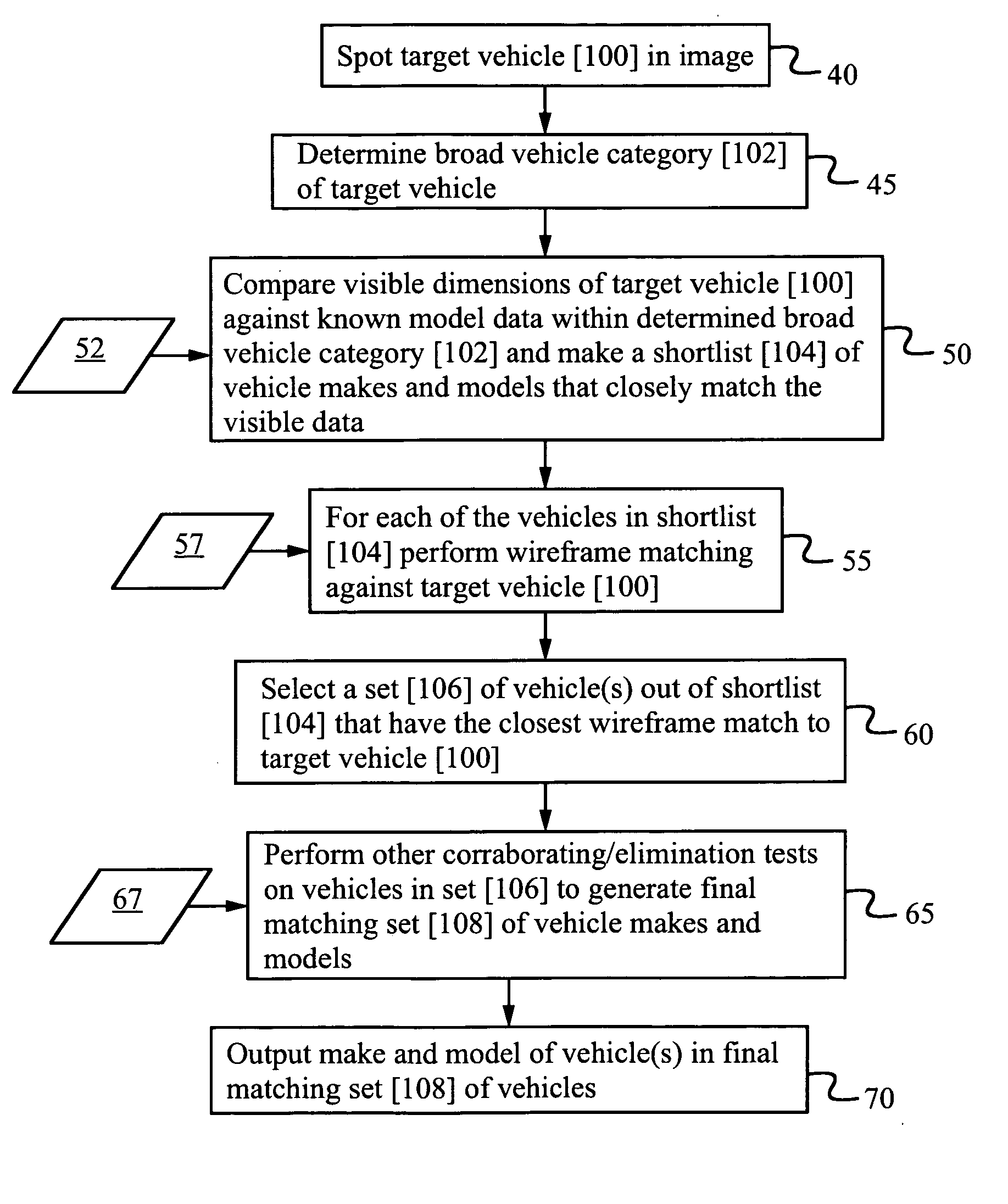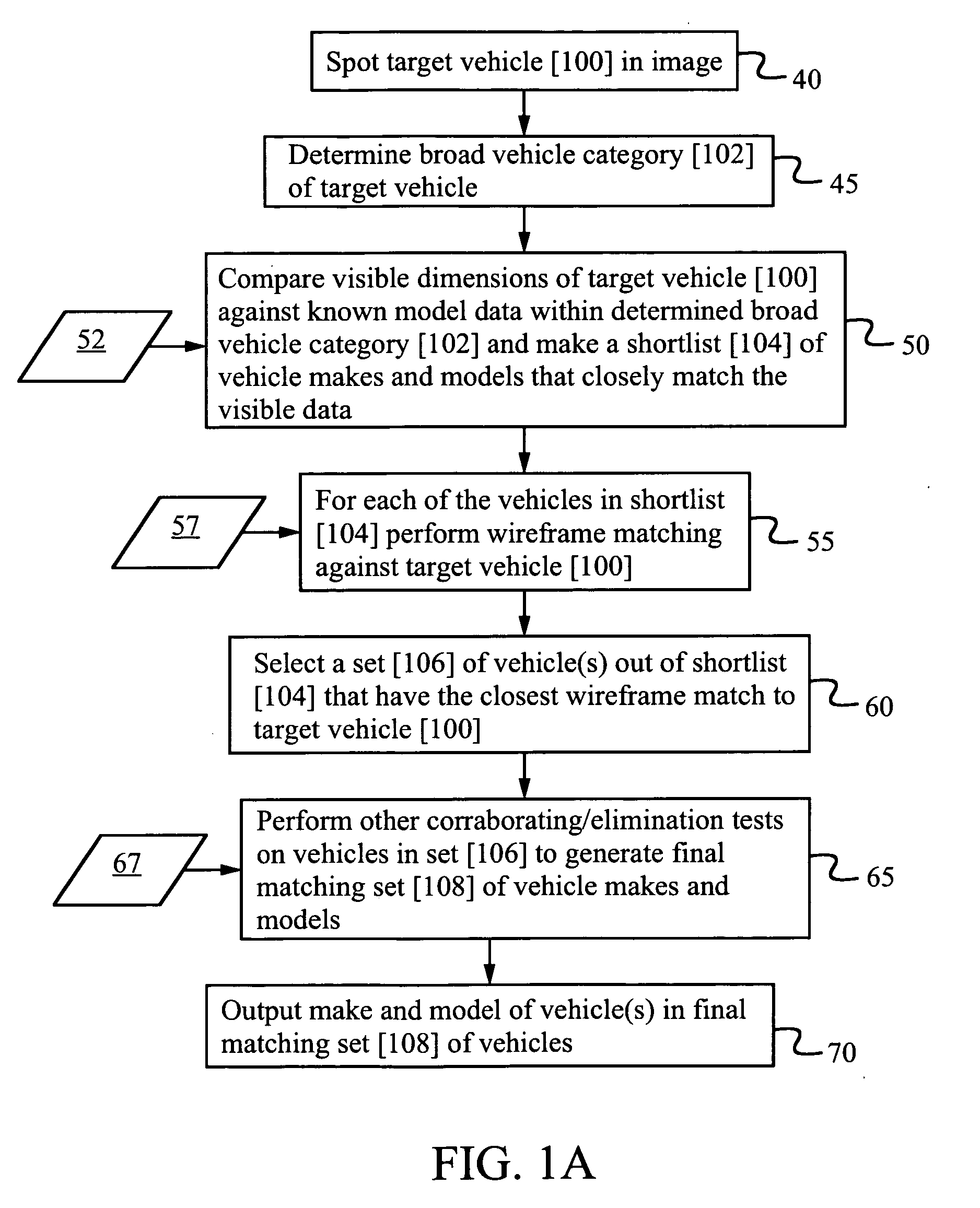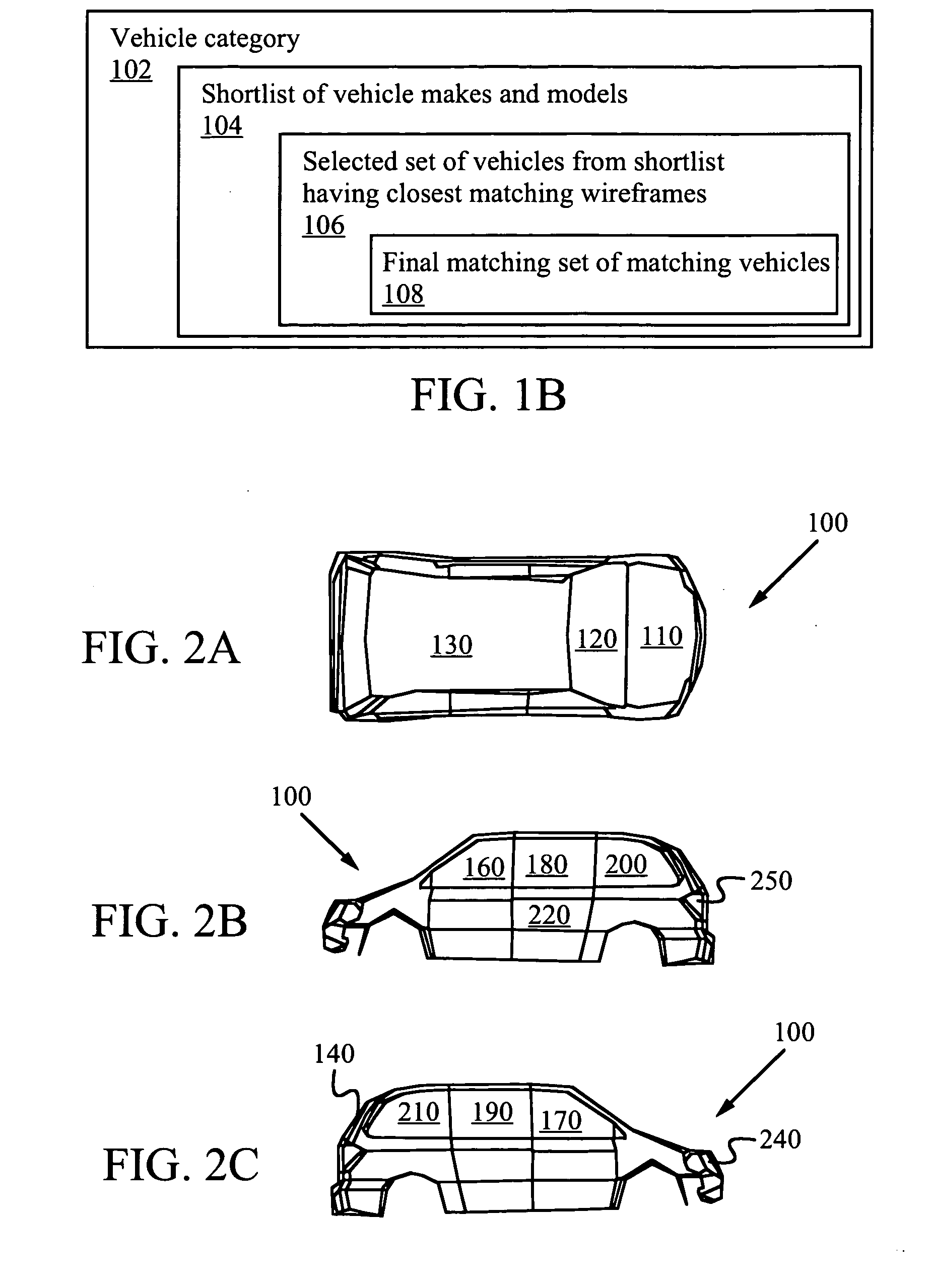Method for vehicle classification
a vehicle and classification technology, applied in the field of vehicle classification methods, can solve the problems of affecting the classification accuracy of older vehicles, the inability to classify older vehicles without the medium attached, and the general implementation cost of systems, etc., to achieve the effect of reducing the workload and increasing the complexity of the matching process
- Summary
- Abstract
- Description
- Claims
- Application Information
AI Technical Summary
Benefits of technology
Problems solved by technology
Method used
Image
Examples
Embodiment Construction
[0021] Although the following detailed description contains many specifics for the purposes of illustration, anyone of ordinary skill in the art will appreciate that many variations and alterations to the following details are within the scope of the invention. Accordingly, the following preferred embodiment of the invention is set forth without any loss of generality to, and without imposing limitations upon, the claimed invention.
[0022]FIG. 1A shows a flowchart of a preferred embodiment of the current invention. To start the task of vehicle identification, an image is obtained. An example of an image could be an aerial image of an area, or an image of a vehicle taken at ground level. Any image where a vehicle can be seen would in general suffice to initiate the vehicle identification process. In a preferred embodiment, the image is stored in digital format on a computer-readable medium to facilitate computational image processing. In addition, subsequent steps in the method descr...
PUM
 Login to View More
Login to View More Abstract
Description
Claims
Application Information
 Login to View More
Login to View More - R&D
- Intellectual Property
- Life Sciences
- Materials
- Tech Scout
- Unparalleled Data Quality
- Higher Quality Content
- 60% Fewer Hallucinations
Browse by: Latest US Patents, China's latest patents, Technical Efficacy Thesaurus, Application Domain, Technology Topic, Popular Technical Reports.
© 2025 PatSnap. All rights reserved.Legal|Privacy policy|Modern Slavery Act Transparency Statement|Sitemap|About US| Contact US: help@patsnap.com



